Camp cooking for beginners: What to use and why
Learn about camp cooking for beginners here. We break down the gear with the pros & cons - BBQs, gas stoves, open fire, portable pizza ovens & more.
Advertisement
Alright, you’ve packed your swags, loaded the camp fridge and triple-checked you’ve got the bug spray. But how are you planning to feed everyone once you’re there? Because unless you’re planning on living off uncooked two-minute noodles and a box of Jatz all weekend (no judgment, but…c’mon), you’re gonna need something to cook on.
Despite what social media shows us, cooking outdoors for the majority of campers does not include three-course meals with slow-cooked desserts and smoked brisket (although hey, respect if that’s your vibe and you’ve got the time). This is about finding the right gear to get a hot feed going with minimal fuss. Think beachside bacon and eggs for brekkie, grilled snags by a river, or just heating up a can of baked beans next to your swag.
This guide is for beginners and those just getting back into camping. We’ll run through the most common camp cooking options, their pros and cons, and what sort of camping each one suits best. Later in this series, we’ll dig deeper into each one and even test some gear. But for now, let’s get the lay of the land.
If you only buy one bit of camp cooking gear, a gas cooker is a top choice. You can cook the majority of things you would normally cook at home on a gas cooker and because they’re reliable and easy to use, they’re suitable for everyone, even if you’ve never camped a day in your life.

Gas cookers are best for new campers, both quick and long getaways, those who regularly boil water for tea and coffee, and anyone who values getting a feed going fast.
Pro tip: Make sure the gas cooker you purchase has a wind guard and bring a lighter as a backup. Nothing says welcome to cooking in the bush more than an electric spark clicker that has stopped working or an unexpected breeze blowing out your flame.
There’s something about cooking on a barbie that feels right when you’re camping. Like you’re doing it properly. If you’ve already mastered the patio BBQ, there’s no reason why you can’t get a more portable one and make it your go-to for camping.

Portable BBQs are best for those obsessed with their patio BBQ, longer stays, or anyone who loves a proper grilled feed with a bit of char.
Pro tip: Pack a BBQ mat or foil tray for easier cleanup.
Portable Pizza Ovens have gone from backyard accessory to legit campsite hero. Don’t believe me? Read our recent review of the Gozney Tread portable pizza oven. I reckon this could be a bit of a game changer!
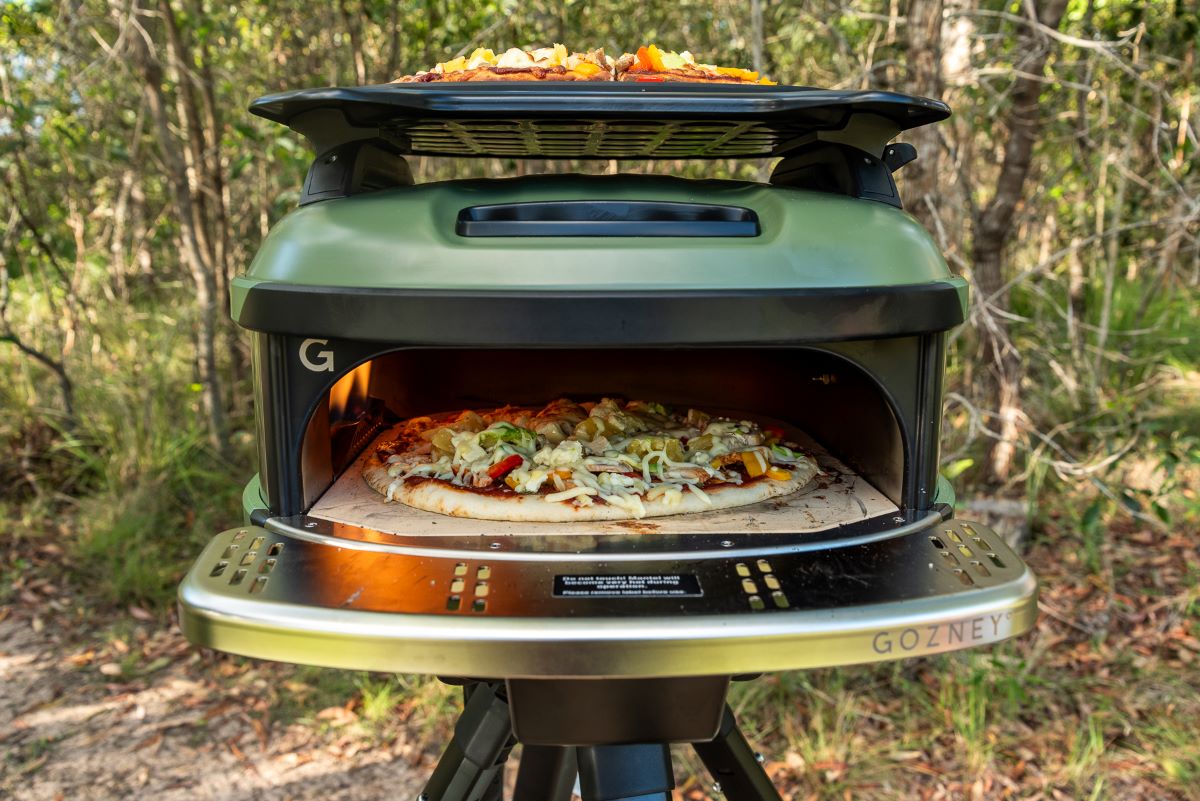
Portable pizza ovens are best for shorter trips or those who don’t mind finding another solution to boiling water for their tea/coffee and two-minute noodles. It’s also great for families as pizza can be a choose-your-own-adventure deal when it comes to toppings, making it easier to please everyone.
Pro tip: Grab some pre-made pizza bases from the supermarket and prep toppings before you leave.
This is for the traditionalists. If you love the smell of campfire smoke and don’t mind a bit of ash in your meal every now and then, cast iron cooking on an open fire is hard to beat.
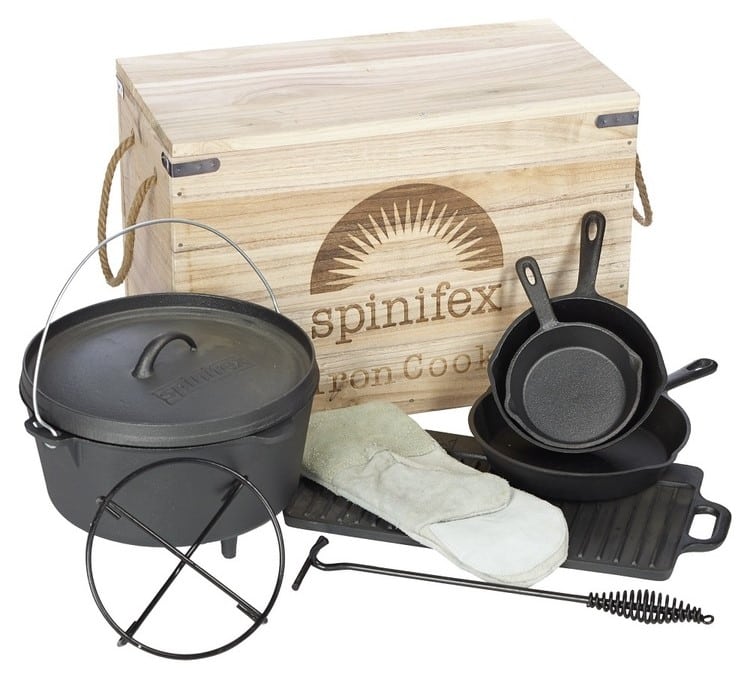
Cooking with cast iron on an open fire is good for longer stays, cooler weather, and folks who enjoy the ritual of cooking over a fire.
Pro tip: Season your cast iron before you leave, and make sure you have a decent pair of heat-proof gloves. Also, pack a trivet or camp oven stand to get the best control over the heat. If you’ve never cooked on an open fire before, it would pay to practice in your backyard before you leave.
With modern battery tech, induction cooking at camp is fast becoming popular and is a good choice (if not the only choice) in places where fire and gas aren’t allowed.
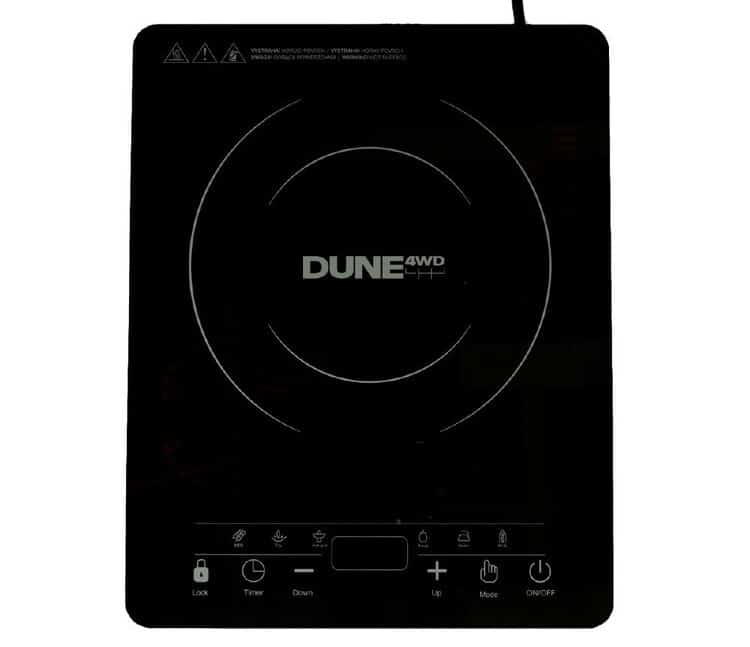
Best for caravanners, vanlifers, and campers with a decent off-grid power setup. Even with a decent set-up, is it enough for long-term use of an induction cooktop?.
Pro tip: Keep an eye on your battery draw. Induction is fast, but it’ll drain a small battery system quicker than you can say “watt’s the problem?”
If you’ve ever dreamed of pulling into camp and having a hot pie waiting for you, the humble 12V camping oven is your new best mate. These little steel boxes plug into your vehicle’s 12V socket and gently warm, bake, or reheat your meals while you’re driving or out doing fun stuff.
Read our review on the Travel Buddy 12V camping oven here.
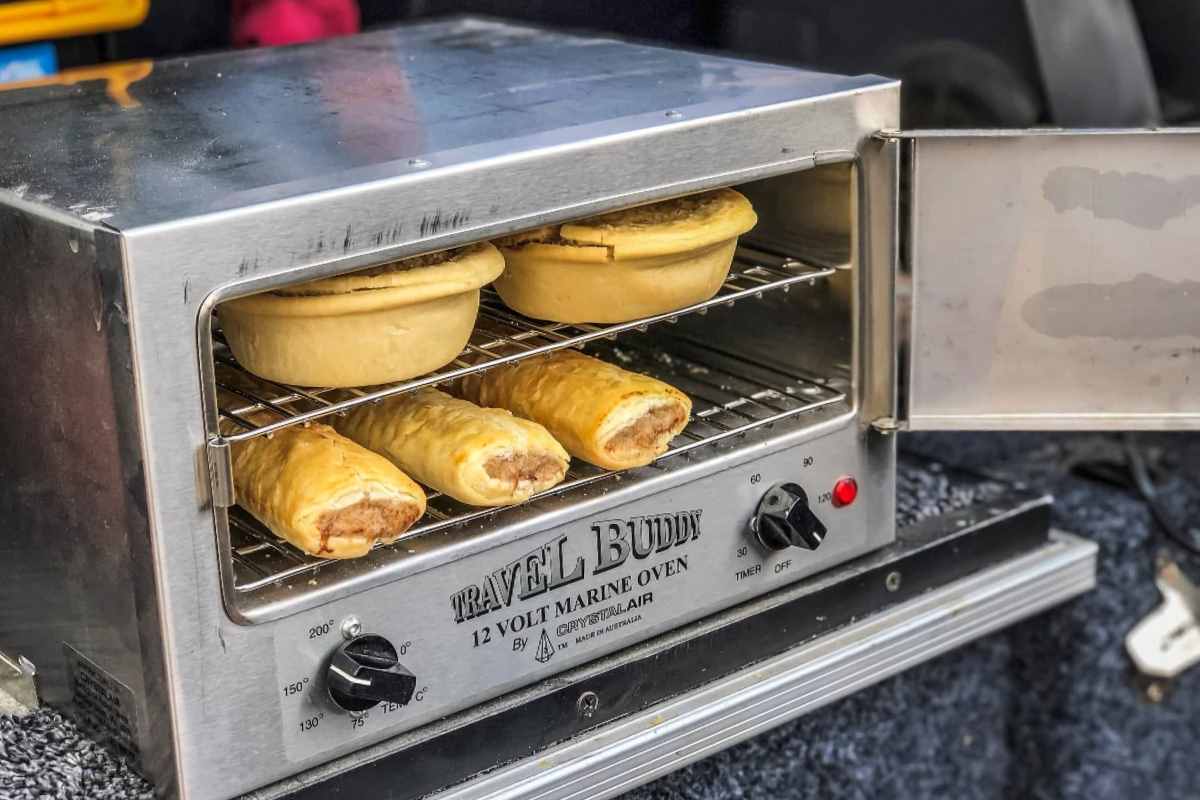
12V camping ovens are best for short trips, slow cooking and those with a decent 12V setup. Ideal for those who don’t actually want to slave over a hot flame, and just want to heat something up like a pie or leftover lasagne.
Pro tip: Wrap your food in foil trays or baking paper for easier cleanup, and pre-load it before hitting the road. If you’re doing a long drive, time it right and you’ll arrive to the smell of last night’s dinner. Beats servo food any day.
Single-use grills are exactly what their name implies: a portable grill that you can only use once. Designed for convenience, they come pre-filled with a slow-burn material, and after you’ve cooked your dinner, you simply discard the whole thing.
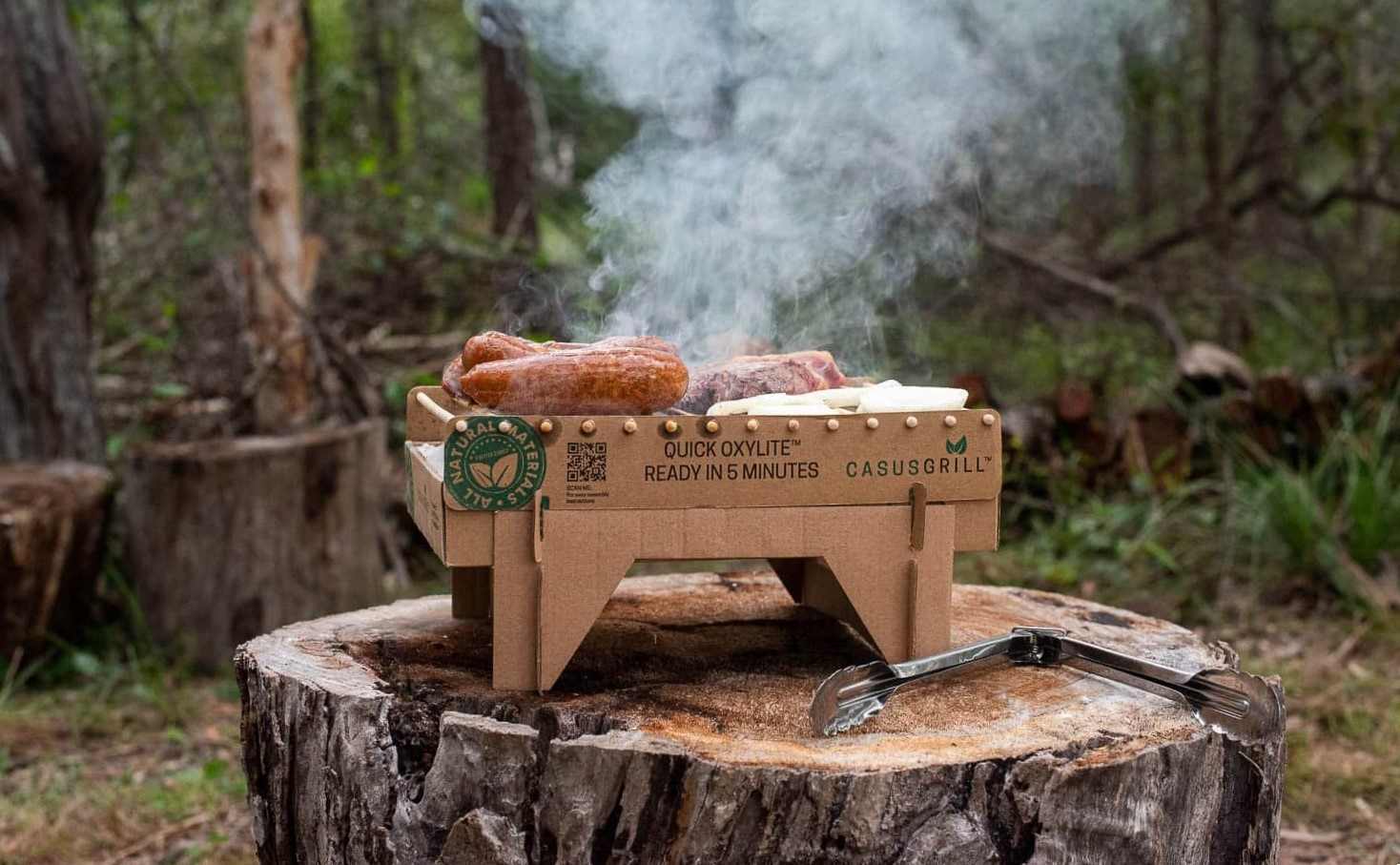
Disposable grills are good for quick overnighters, day trips, camping in remote areas where you need to hike your cooking gear in, or for anyone who wants to cook without dragging out the full kit.
Pro tip: Some disposable grills are more eco-friendly than others. Make sure you get one that doesn’t leave a footprint behind, like the Casus Grill we tested out over at RVDaily.
Most overnight hikers are no stranger to rapid boil stoves, and as the name implies, these little units boil water fast.

Rapid boil stoves are best for solo campers, hikers, or anyone who needs hot water in a hurry. If you’re happy to live off dehydrated/freeze-dried meals where you just add water, this could be your meal ticket.
Often seen as a novelty rather than a cooking solution, solar ovens are totally fuel-free, slow-cooking contraptions that harness the sun to cook your food.
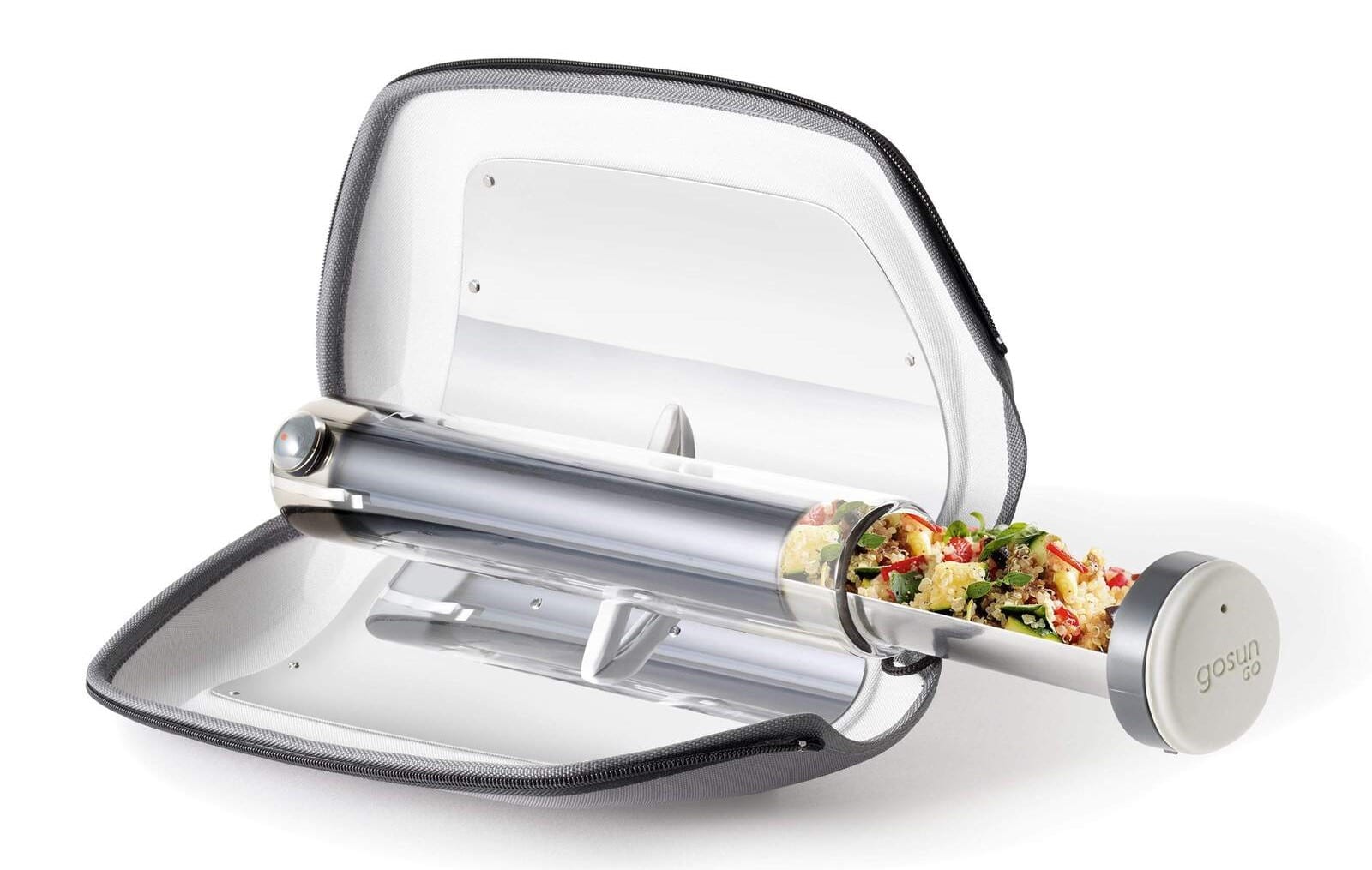
Solar ovens are best as a second-solution for cooking, as part of your emergency survival kit, and for long-stay campers with time on their hands and full sun on their site.
There’s no “one perfect” way to cook outdoors. It depends on where you’re going, how long you’re staying, how many you need to cook for, what you like to eat and how much gear you want to lug around.
Think about:
Start small and build your setup as you go. At the end of the day, the best cooking setup is the one that gets food on your plate without too much stress and as long as you didn’t forget the tomato sauce, even a basic meal tastes better camping than when you’re at home.
Stay tuned for the next article in this series, where we’ll be talking about must-haves for building your camp kitchen.
This article contains affiliate links to products. We may receive a commission for purchases made through these links.